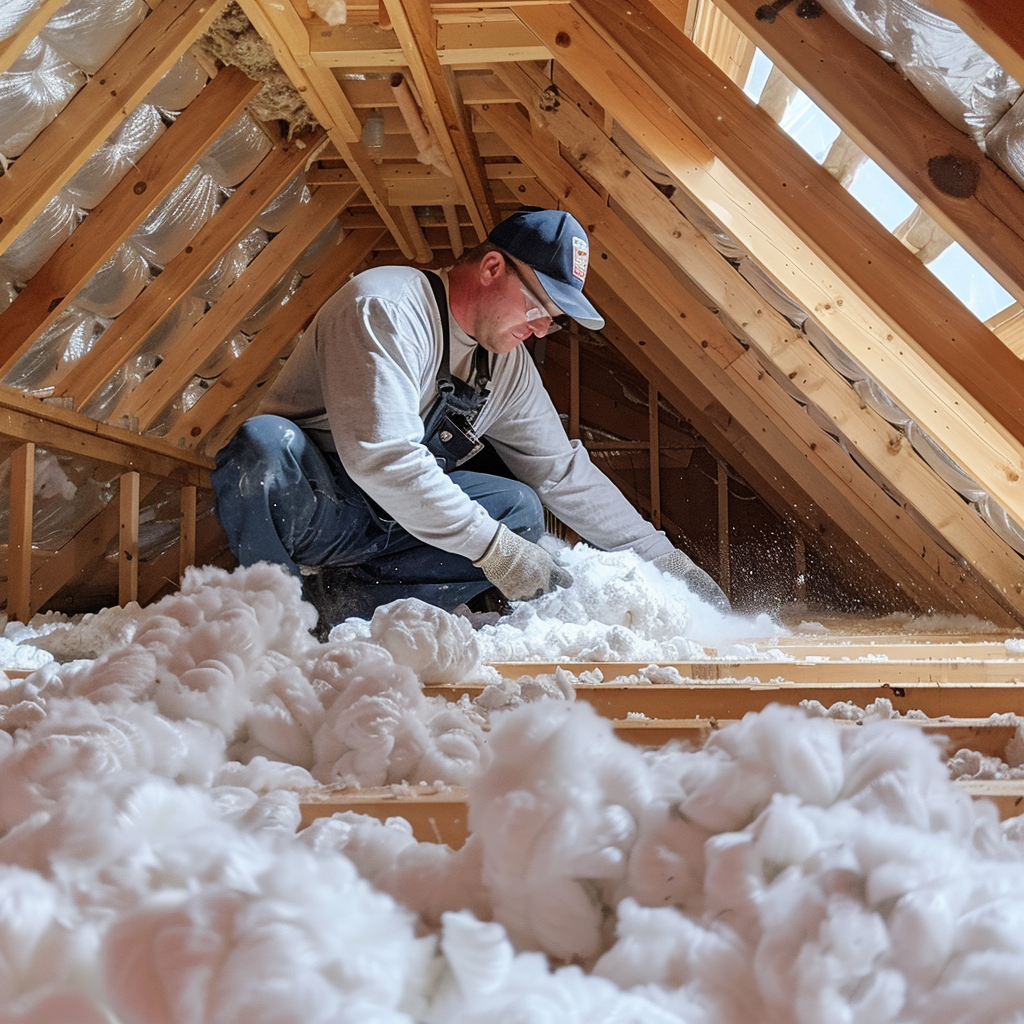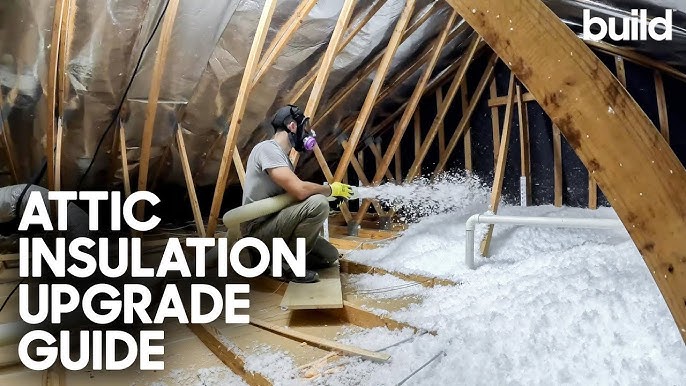The Ultimate Guide to Picking the Right Attic Insulation DFW Solutions
The Ultimate Guide to Picking the Right Attic Insulation DFW Solutions
Blog Article
Discover the Various Types of Attic Insulation and Their Distinct Benefits for Your Home's Energy Efficiency

Fiberglass Insulation
Fiberglass insulation is among the most generally made use of products for attic insulation as a result of its superb thermal efficiency and cost-effectiveness. Made up of tiny glass fibers, this material successfully catches air, developing a shielding obstacle that aids preserve consistent interior temperature levels. Its high R-value per inch makes it especially efficient at withstanding warmth transfer, which is critical for power conservation in homes.
Installment of fiberglass insulation is relatively straightforward, usually available in batts or loose-fill types, accommodating different attic room configurations. Additionally, it is immune and non-combustible to dampness, reducing the danger of mold and mildew development. This durability adds to its long life, making fiberglass a viable long-term investment for property owners.
In addition, fiberglass insulation is typically manufactured from recycled products, which improves its eco-friendliness. The material can likewise add to soundproofing, reducing noise transfer between areas. While it is necessary to wear protective equipment during setup to prevent irritation from the fibers, the total advantages of fiberglass insulation, consisting of power cost savings and ecological factors to consider, make it a prominent selection for improving attic performance and promoting a comfy living setting.
Spray Foam Insulation
Spray foam insulation is an extremely reliable alternative for attic insulation, understood for its premium air securing and thermal performance. This innovative insulation product is composed of a blend of isocyanate and polyol material, which, when integrated, increases swiftly to fill up spaces and tooth cavities in the attic room area. Its ability to abide by various surface areas ensures a continual barrier against air leakages, substantially minimizing heat loss during cooler months and warm gain throughout warmer periods.
Among the essential advantages of spray foam insulation is its high R-value per inch, which indicates it gives superb thermal resistance in a relatively slim application. This is particularly advantageous in attic rooms where area is frequently limited. Additionally, spray foam can help lessen moisture build-up, reducing the danger of mold and mold development, which can be detrimental to both the structure and interior air high quality.
While the preliminary price of spray foam insulation may be more than typical options, its long-lasting power cost savings, combined with enhanced comfort and enhanced home worth, make it a worthwhile financial investment for house owners seeking enhanced power performance. Attic Insulation DFW. In general, spray foam insulation stands out as an efficient solution for enhancing attic insulation
Cellulose Insulation

Cellulose insulation is a prominent option for attic insulation, largely composed of recycled paper items treated with fire retardants. This environmentally pleasant choice is recognized for its superb thermal performance, effectively lowering heat transfer in both summer season and wintertime months. The dense make-up of cellulose permits it to fill up gaps and voids in attic room spaces, supplying a seamless obstacle against air leaks.
One of the significant advantages of cellulose insulation is its ability to withstand mold and parasites, owing to the fire retardant therapies used during production. Additionally, it flaunts a high R-value per inch, which converts into superior power performance. House owners can anticipate reduced heating & cooling prices as an outcome of improved insulation.
Installation is generally achieved via blowing loose cellulose right into the preferred area, enabling for a effective and fast process. This method additionally minimizes interruption to the existing framework. Cellulose insulation has a relatively low environmental impact, as its production process uses recycled products, adding to sustainable building methods.
Rock Wool Insulation
Among the numerous options for attic room insulation, rock woollen, additionally recognized as mineral woollen, sticks out as a result of its remarkable thermal and acoustic efficiency. Made from all-natural or recycled products, rock wool is created by melting rock and spinning it into fibers, resulting in an item that offers excellent insulation buildings.
Among the substantial advantages of rock wool insulation is its high R-value, which shows its effectiveness in resisting warmth flow. This particular not just improves energy efficiency however also adds to keeping a comfy indoor temperature level year-round. Furthermore, rock wool is naturally fire-resistant, making it a safer alternative for homes as it can withstand high temperatures without melting or releasing poisonous fumes.
Additionally, rock wool insulation stands out in soundproofing capacities, successfully minimizing noise transmission between spaces and from outside sources. On the whole, rock wool insulation supplies a comprehensive option for enhancing power performance, safety, and convenience in residential settings.
Glowing Obstacle Insulation
Glowing obstacle insulation acts as an effective option for decreasing warmth transfer in attic rooms, specifically in warmer environments. This kind of insulation works by reflecting induction heat far from living rooms, consequently lowering the quantity of heat that gets in a home throughout hot weather condition - Attic Insulation DFW. Commonly composed of an extremely reflective product, such as aluminum foil, radiant obstacles are installed in attic rooms, encountering the roof covering, where they can obstruct inbound heat from the sun
The primary benefit of radiant barrier insulation is its capacity to reduced air conditioning expenses. By showing warmth instead of absorbing it, glowing barriers can aid maintain an extra secure interior temperature level, minimizing the work on a/c systems. This efficiency translates into lower energy bills and enhanced convenience for homeowners.
Along with power financial savings, glowing barriers see here can likewise contribute to improved interior air quality. By decreasing heat buildup, they aid lessen moisture degrees, which can avoid mold growth and boost overall air circulation. When mounted correctly, radiant barrier insulation can be an indispensable Visit Website addition to any kind of energy-efficient home, making it a worthwhile factor to consider for house owners seeking to improve their attic insulation technique.
Conclusion
In final thought, recognizing the numerous types of attic room insulation-- fiberglass, spray foam, cellulose, rock wool, and radiant obstacles-- enables homeowners to make educated choices regarding energy performance. By choosing the ideal insulation material, significant decreases in energy costs can be accomplished, along with improvements in interior comfort.

In final thought, understanding the try this web-site different types of attic insulation-- fiberglass, spray foam, cellulose, rock wool, and glowing barriers-- makes it possible for home owners to make educated decisions pertaining to energy performance.
Report this page